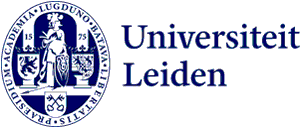
X-ray mirrors: useful in space, but also for radiation therapy
A special type of mirror to reflect X-rays has more possible applications than space research. Targeted radiation therapy for cancer, for example. Next to his full-time job, physicist David Girou mapped out the possibilities. He will receive his PhD on 14 June.
David Girou calls the six years he spent doing his PhD research 'an interesting challenge'. He is a so-called external PhD student, not paid by the university, and did his research alongside a full-time job. As a researcher and project manager at Cosine Measurement Systems in Sassenheim, his work is indeed related to his research topic, but that does not necessarily make it any easier. Girou: 'Projects, deadlines and customers always take precedence. I had to develop coping strategies, and be very intentional with how I spend my time.'
The first challenge was: reflecting X-rays
Girous' work and research concern a technology with silicon structures with which you can reflect X-rays. ‘There is a need for this in space research. Some objects in the universe, from large, hot gas structures to compact black holes, are extremely hot and energetic, and therefore emit light in the X-ray spectrum. ‘Regular’ telescopes such as Hubble or James Webb, as amazing as they are, work with visible light and cannot detect these X-rays. Therefore, they miss crucial information about how these objects behave. For that, we need X-ray telescopes.’
And that has to happen in space
X-rays from space don't penetrate the Earth's atmosphere, so we have to go to space to detect them, which is quite the challenge.' Indeed, the X-ray mirrors that Girou is working on are special silicon structures called Silicon Pore Optics (SPO), and they will be assembled into a 2.5 m diameter optics at the end of a 12 m long telescope. ‘This space telescope named Athena will then be launched in the mid-2030s. And, once the telescope is in space, there are no possibilities for servicing or repair, so every system has to work on the first try.’ In the end, it is worth the incredible effort, Girou says: 'With SPO, we can build light, robust and relatively cheap X-ray mirrors for a space telescope that can unveil the secrets of the hot and energetic universe.’
But what else can you do with it?
Thanks to work on the Athena telescope, the SPO technique is now well developed. Girou wanted to find out what else can be done with it. Using simulations and experiments, Girou managed to design a new optical system that could be used in the future, for example, in radiation therapy for cancer. The so-called Laue lens uses silicon crystals to focus X-rays into a small volume. ‘This allows you to irradiate a tumor in a patient very precisely, without irradiating the skin too intensely, which can be an issue with other irradiation techniques at the moment.’
Denmark and the Netherlands: both flat, people cycle and the language is difficult
Girou comes from France and has also worked in Denmark and the US. For now, he likes to stay in the Netherlands. ‘Every place is different, but I see some similarities between Denmark and the Netherlands. The country is flat, the people cycle and speak a language that is difficult to learn, haha! I really like the Dutch culture, the direct approach and flexible working, for example. I also really appreciate that we are not so car-oriented here as in France and the US. I use bicycle, bus and train to car and plane almost every month. That gives me a feeling of freedom. It would really be a challenge for me to go back to France and work there.'
Text: Rianne Lindhout
Image: Cosine, David Girou
